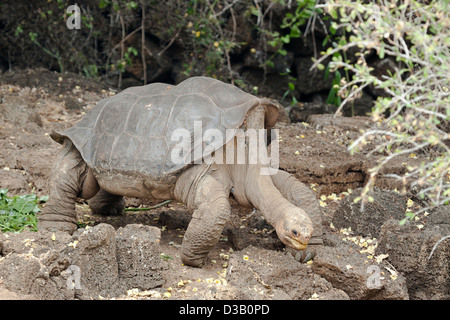

/close-up-of-giant-tortoise-731844931-5995c2ba845b340010c16fff.jpg)
These hybrid tortoises have shells that often exhibit the distinctive saddleback shape of their ancestors. After the death of Lonesome George in 2012, the last Pinta island tortoise, twelve living species are thought to remain in Galapagos across ten islands. Genetic analysis of tortoises on Isabela Island has shown that many of the tortoises present have genes from both the Pinta and Floreana populations. The giant tortoise arrived in Galapagos from mainland South America 2-3 million years ago, where they underwent diversification into 14 species, differing in their morphology and distribution. Researchers have not lost hope of finding a mate for Lonesome George, and if they do, George’s offspring would be used to repopulate his former home. abingdonii) Islands are extinct.Efforts to restore tortoise populations on both islands prioritize ecosystem and island restoration through the return of giant tortoises and their role as ecological engineers. The goal of Project Pinta, as it is called, is the eventual reintroduction of Pinta Island tortoises there. The giant tortoise species of Floreana (Chelonoidis niger) and Pinta (C. These tortoises that made it to other islands and interbred with the native tortoises have left the genes behind that scientists hope to use to resurrect the species that human activity drove to extinction. The reintroduction of Giant Tortoises on Pinta is a temporary solution.
#Pinta giant tortoise free
Sometimes for whatever reason, some of the tortoises taken from Pinta Island or Floreana Island were tossed overboard or set free on other islands. a tortoise that was the last of another species called the Pinta. As tortoises were sometimes collected by the hundreds to be stored alive as provisions on passing ships, the populations were quickly decimated. A giant tortoise in the Galápagos Islands that was thought to have gone extinct over a century ago just came out of hiding. They were closer to shore, easier to lift away, and apparently tasted better. Of all Galapagos species, giant tortoises (Chelonoidis spp.) were the most exploited by humans, and then the most devastated by introduced mammal species.The recovery of Galapagos giant tortoise populations began in the early 1960s. Purportedly the saddleback tortoises, such as Lonesome George’s species, and those from Floreana and Santa Fe, were favoured by the sailors, whalers, and pirates.


 0 kommentar(er)
0 kommentar(er)
